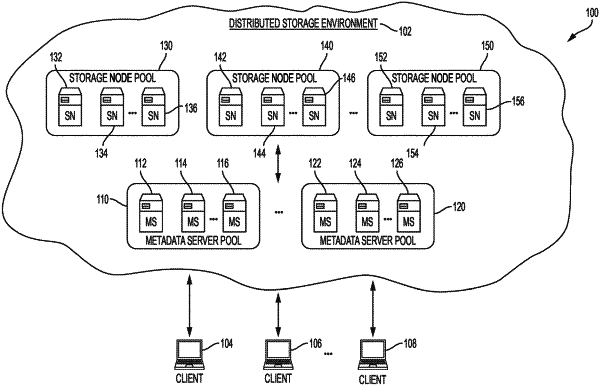| CPC H04L 67/1097 (2013.01) [H04L 67/1001 (2022.05); H04L 67/1095 (2013.01); H04L 67/01 (2022.05)] | 20 Claims |

|
1. A method comprising:
receiving, from a client device, an electronic message including a data storage operation request and a segment routing header (SRH), the SRH comprising a segment routing (SR) list identifying a plurality of storage node candidates for the data storage operation, the data storage operation request relating to a first piece of data;
rejecting, by a storage node from the plurality of storage node candidates, the data storage operation request based on a current state of the storage node; and
after rejecting the data storage operation request, sending, by the storage node, the electronic message including the data storage operation through a portion of a path defined by the SR list on the SRH, the portion of the path comprising storage nodes from the plurality of storage node candidates that have not received the electronic message and a plurality of functions each corresponding to at least one of the storage node candidates, wherein the SRH comprises an updated SR list identifying the storage nodes that have not received the electronic message, and wherein the SRH and the updated SR list steer the electronic message through the portion of the path comprising storage nodes that have not received the electronic message until one of the storage nodes accepts the data storage operation request, the plurality of function nodes are a subset of available functions nodes, the plurality of function nodes being selected for the list from the available function nodes based on access to the first piece of data and their known capacity for responding to the data storage operation request based on access to the first piece of data.
|